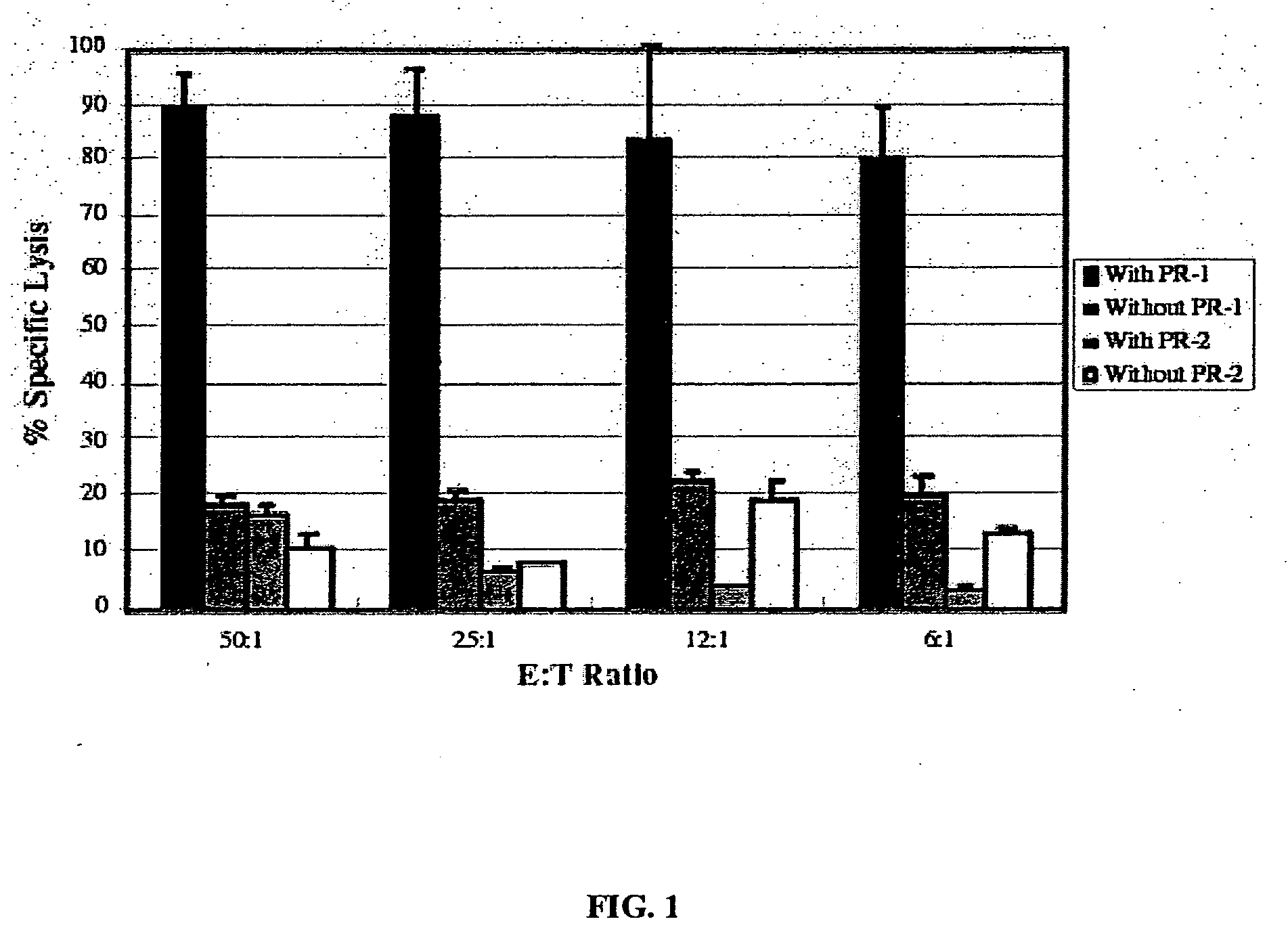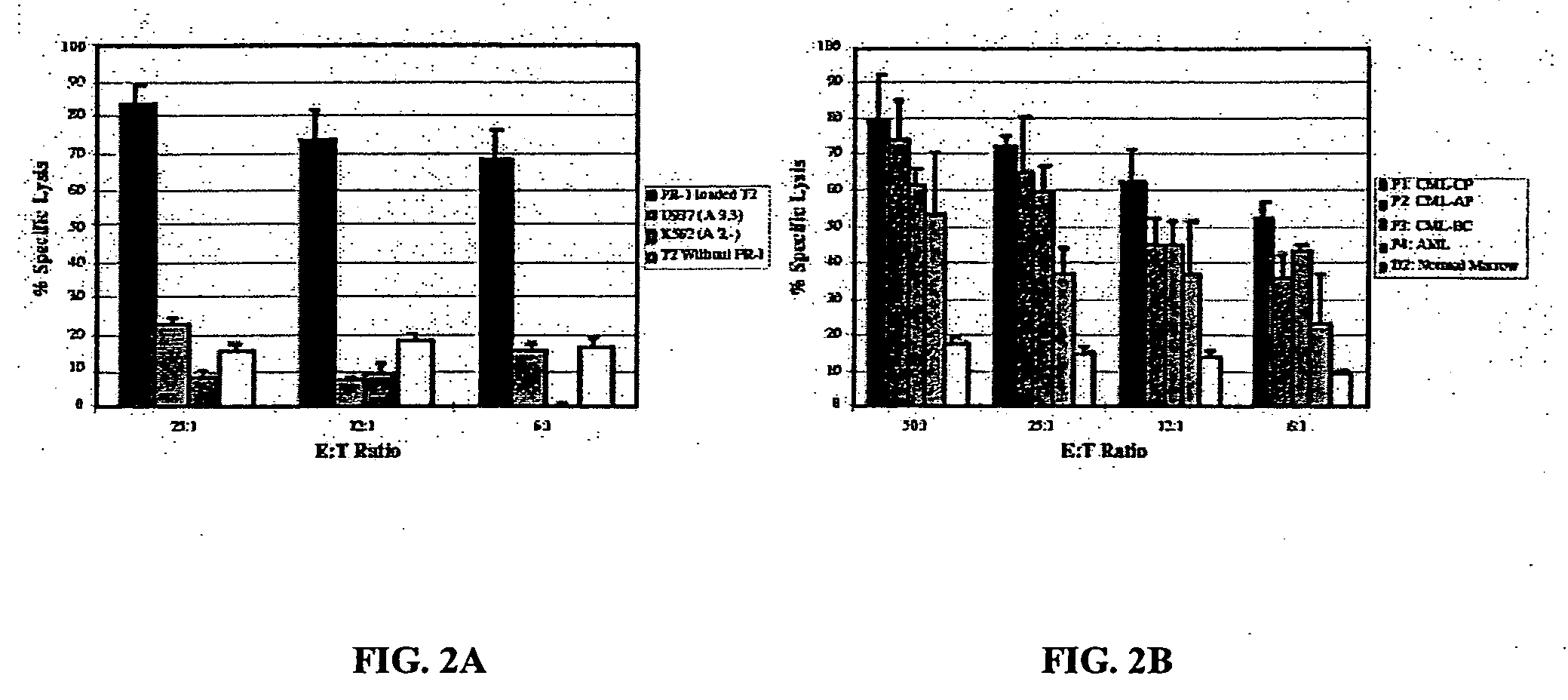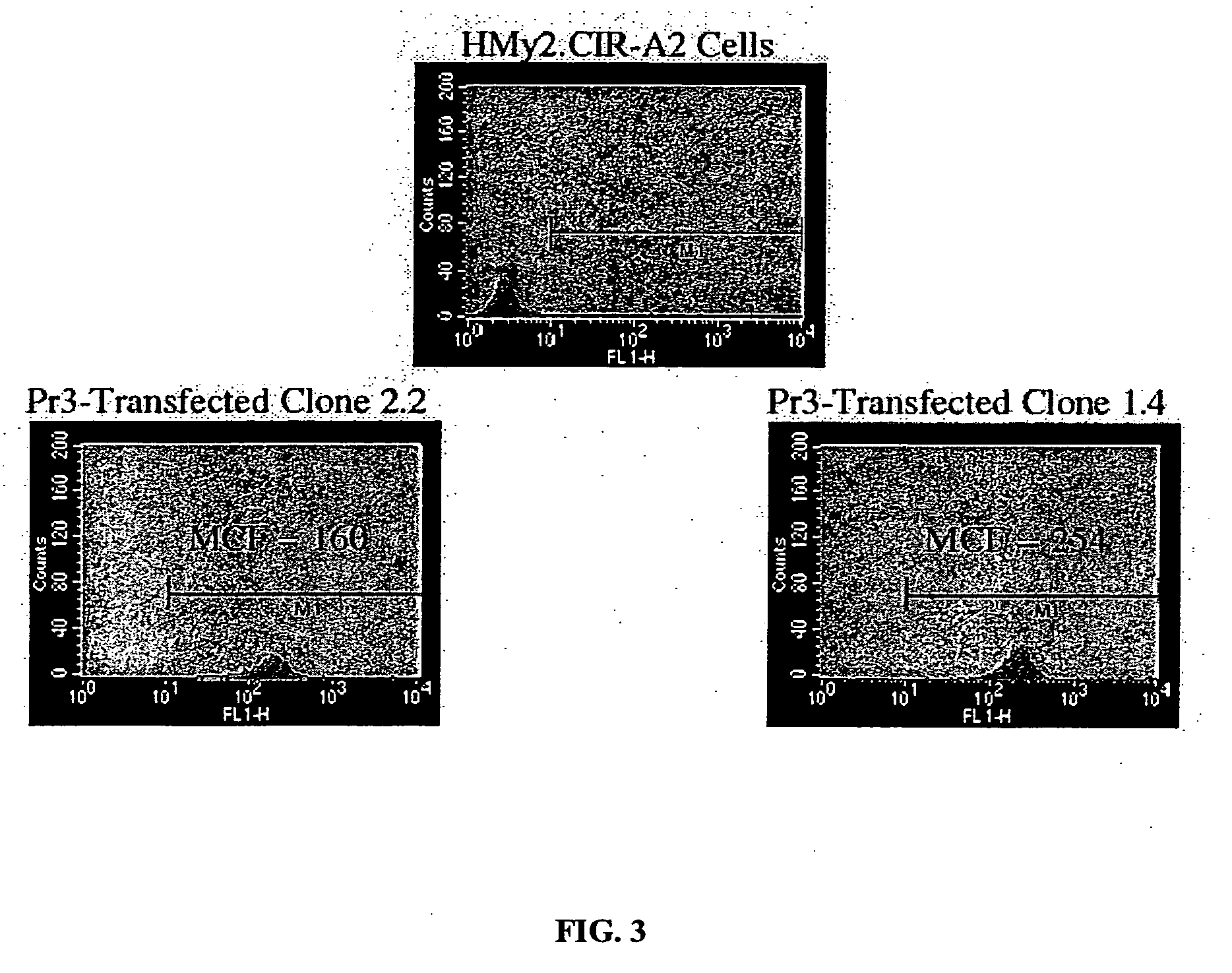Anti-cancer vaccines
a technology of anti-cancer vaccine and immunotherapy, which is applied in the field of cancer and immunotherapy, can solve the problems of gvhd, dli for aml remission generally not as durable, and lack of evidence for specific and efficacious immune responses in human cancer
- Summary
- Abstract
- Description
- Claims
- Application Information
AI Technical Summary
Benefits of technology
Problems solved by technology
Method used
Image
Examples
example 1
Methodology
[0267] Patients and donors. Donors and patients were treated at the University of Texas M. D. Anderson Cancer Center on protocols approved by the Institutional Review Board. After informed consent, cells from the CML patients and their HLA-matched bone marrow (BM) transplantation donors were obtained. PBMCs from untreated CML patients or from patients receiving IFN were collected and cryopreserved for later analysis. Cells were separated using Ficoll-Hypaque gradient-density (Organon Teknika Corp., Durham, N.C., USA) and frozen in RPMI-1640 complete medium (CM) (25 mM HEPES buffer, 2 mM L-glutamine, 100 U / ml penicillin, 100 μg / ml streptomycin; Life Technologies Inc., Gaithersburg, Md., USA) supplemented with 20% heat-inactivated pooled human AB serum (AB; Sigma-Aldrich, St. Louis, Mo., USA) and 10% DMSO, according to standard protocols. Before use, cells were thawed, washed, and suspended in CM plus 10% AB. High-resolution HLA testing was performed by the HLA Laboratory ...
example 2
Clinical Trials
[0275] Based upon pre-clinical studies, the toxicity and efficacy of PR1 peptide vaccination for patients with refractory or relapsed myeloid leukemias was investigated. This study is being conducted in two phases: a Phase I initial toxicity phase (in order to determine initial vaccine safety), and a Phase II efficacy and toxicity phase. Nine patients will be studied in the Phase I portion, and up to 60 patients will be studied in the Phase II portion. Four patients have been enrolled thus far on Phase I. Details of the protocol are described below.
[0276] PR1 peptide is injected subcutaneously in incomplete Freund's adjuvant every 3 weeks for 3 injections to induce a PR1 specific host response against the myeloid leukemia. Both in Phase I and in Phase II, patients will also be evaluated for signs of immune reactivity. Before, during, and at the end of the 9 week period of vaccination, the peripheral blood mononuclear cells (PBMC) from the patients will be tested for...
example 3
Generation of PR1-CTL and Ex Vivo Studies
[0284] Experimental and clinical evidence indicates that lymphocytes from HLA-matched allogeneic normal donors exert a powerful graft-versus-leukemia (GVL) effect when used to treat patients with myeloid leukemia (Drobyski et al., 1994; Horowitz et al., 1996). Donor lymphocyte infusions (DLI) alone, when administered to patients that have relapsed after allogeneic bone marrow transplantation (BMT) can cure patients with myeloid leukemia (Collins et al., 1997; Kolb and Holler, 1997). However, graft-versus-host disease (GVHD) is an unwanted and sometimes lethal complication of DLI treatment that occurs in nearly 50% of patients. The GVL and GVHD target antigens of these lymphocytes are largely unknown. GVL may be enhanced and GVHD eliminated after DLI if (1) antigens that were the favored targets of GVL are known and (2) an efficient ex vivo process for enrichment of GVL-causing lymphocytes based on antigen specificity is developed.
[0285] In ...
PUM
| Property | Measurement | Unit |
|---|---|---|
| time | aaaaa | aaaaa |
| weight | aaaaa | aaaaa |
| nucleic acid | aaaaa | aaaaa |
Abstract
Description
Claims
Application Information
 Login to View More
Login to View More - R&D
- Intellectual Property
- Life Sciences
- Materials
- Tech Scout
- Unparalleled Data Quality
- Higher Quality Content
- 60% Fewer Hallucinations
Browse by: Latest US Patents, China's latest patents, Technical Efficacy Thesaurus, Application Domain, Technology Topic, Popular Technical Reports.
© 2025 PatSnap. All rights reserved.Legal|Privacy policy|Modern Slavery Act Transparency Statement|Sitemap|About US| Contact US: help@patsnap.com



